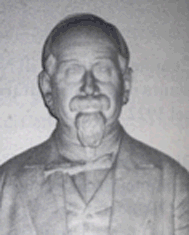Achille Sannia
Achille Sannia (April 14, 1822 – August 2, 1892) was an Italian mathematician and politician.
Achille Sannia | |
|---|---|
 | |
| Born | Campobasso |
| Died | Naples |
| Citizenship | Italian |
| Known for | Geometry and Politics |
| Awards | Great official of the Order of the Crown of Italy, Commendatore of the Order of Saints Maurizio and Lazzaro |
| Scientific career | |
| Fields | Mathematician |
Biography
Achille Sannia was a senator of the Kingdom of Italy.[1] He was born in Campobasso and later moved from Molise to Naples to continue his studies together with Enrico D'Ovidio. He first taught in a private school before moving to a University in 1865 as a professor of geometry.
In 1871, he created a school of Electrical engineering. He wrote two important treatises, one concerning projective geometry and the other elementary geometry. He was a member of the Academy of Sciences.[2]
He had a son, Gustavo Sannia who was also a mathematician.[3]
Works
- Planimetry, with Enrico D'Ovidio, Stab. typ. of the fine arts, Naples 1869, II ed. 1871
- Geometry elements, with Enrico D'Ovidio, (14 editions), Naples 1868-69, 12th edition, B. Pellerano LC Scientific and Industrial Library successor, Naples 1906
- Projection Geometry Lessons dictated in the Royal University of Naples by Prof. Achille Sannia- Ed. Pellerano Naples 1891 of 691pagg.
gollark: There are some live CDs which load all the relevant data into RAM on boot, but this isn't done for regular systems.
gollark: Well, it isn't.
gollark: You should get an SSD. The important bit is that they can do random read much faster which really accelerates startup.
gollark: ™
gollark: I mean, I'm wildly guessing.
References
- "Scheda senatore SANNIA Achille". notes9.senato.it. Archived from the original on 2016-03-04. Retrieved 2019-01-19.
- "Achille SANNIA". www.dm.unito.it. Archived from the original on 29 February 2012. Retrieved 19 January 2019.
- "Gustavo Sannia | MATEpristem". matematica.unibocconi.it. Archived from the original on 2015-10-19. Retrieved 2019-01-19.
This article is issued from Wikipedia. The text is licensed under Creative Commons - Attribution - Sharealike. Additional terms may apply for the media files.